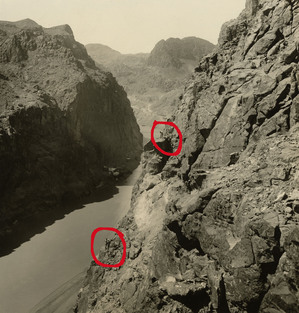31st U.S. President Herbert Hoover is remembered as the leader of America through the first few brutal years of the Great Depression. While his 1929-1933 term did not revive the country’s economy, his visions to harness the water-power of the American Southwest were a success. This is undoubtedly related to his career before presidency as a mining engineer, and his original education in Geology from Stanford University.
Below is a 1932 photograph of President Hoover and other notables involved in the Water Projects touring the diversion tunnels near Boulder City, Nevada. This is the future site of the Hoover Dam, an American engineering feat.

NARA Series: Boulder Canyon Project Series, 1948-1966. Record Group 48: Records of the Office of the Secretary of the Interior, 1826-2009. National Archives Identifier: 2292774



